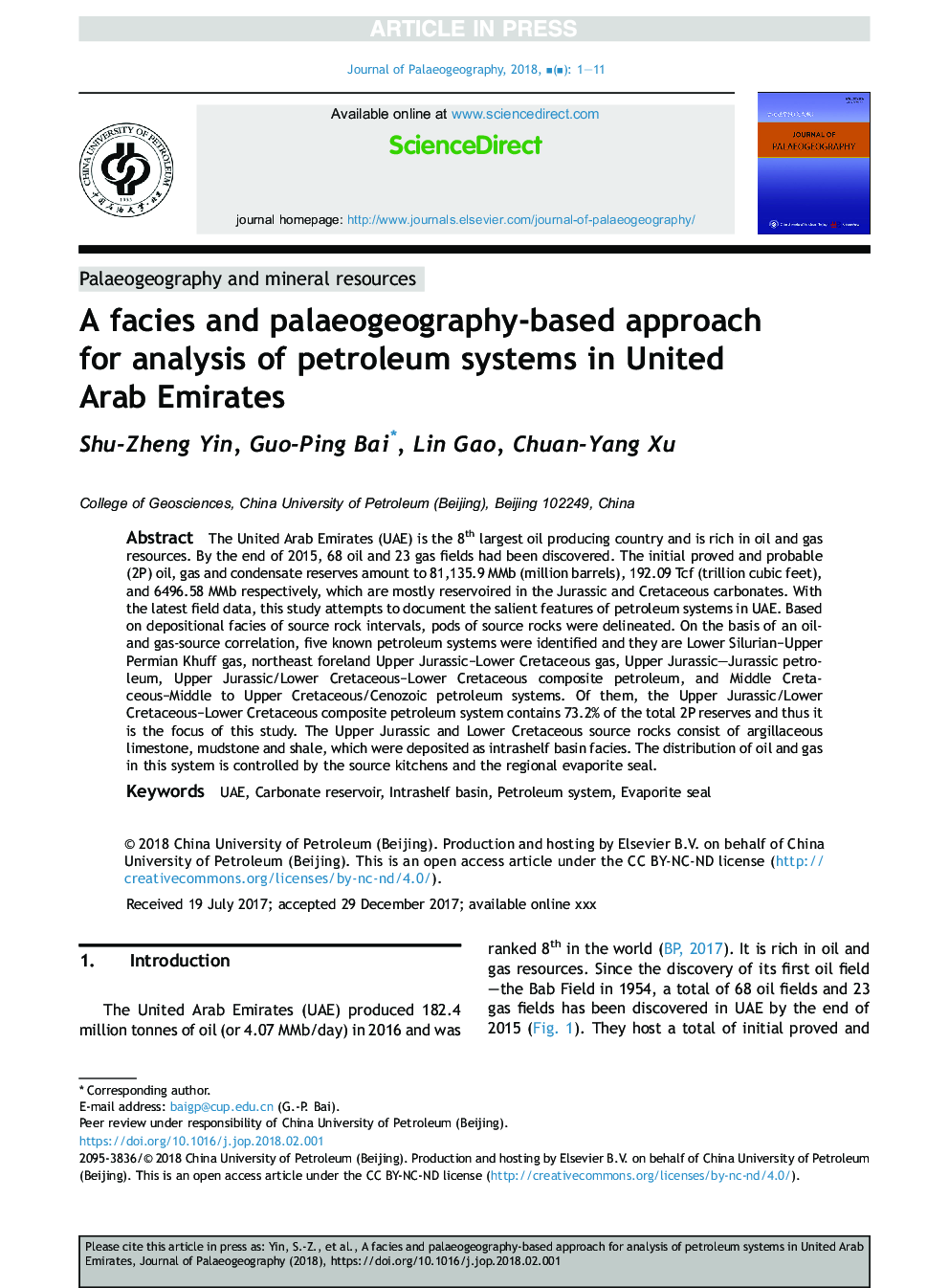| Article ID | Journal | Published Year | Pages | File Type |
|---|---|---|---|---|
| 8895318 | Journal of Palaeogeography | 2018 | 11 Pages |
Abstract
The United Arab Emirates (UAE) is the 8th largest oil producing country and is rich in oil and gas resources. By the end of 2015, 68 oil and 23 gas fields had been discovered. The initial proved and probable (2P) oil, gas and condensate reserves amount to 81,135.9Â MMb (million barrels), 192.09 Tcf (trillion cubic feet), and 6496.58Â MMb respectively, which are mostly reservoired in the Jurassic and Cretaceous carbonates. With the latest field data, this study attempts to document the salient features of petroleum systems in UAE. Based on depositional facies of source rock intervals, pods of source rocks were delineated. On the basis of an oil- and gas-source correlation, five known petroleum systems were identified and they are Lower SilurianâUpper Permian Khuff gas, northeast foreland Upper JurassicâLower Cretaceous gas, Upper Jurassic-Jurassic petroleum, Upper Jurassic/Lower CretaceousâLower Cretaceous composite petroleum, and Middle CretaceousâMiddle to Upper Cretaceous/Cenozoic petroleum systems. Of them, the Upper Jurassic/Lower CretaceousâLower Cretaceous composite petroleum system contains 73.2% of the total 2P reserves and thus it is the focus of this study. The Upper Jurassic and Lower Cretaceous source rocks consist of argillaceous limestone, mudstone and shale, which were deposited as intrashelf basin facies. The distribution of oil and gas in this system is controlled by the source kitchens and the regional evaporite seal.
Related Topics
Life Sciences
Agricultural and Biological Sciences
Soil Science
Authors
Shu-Zheng Yin, Guo-Ping Bai, Lin Gao, Chuan-Yang Xu,
